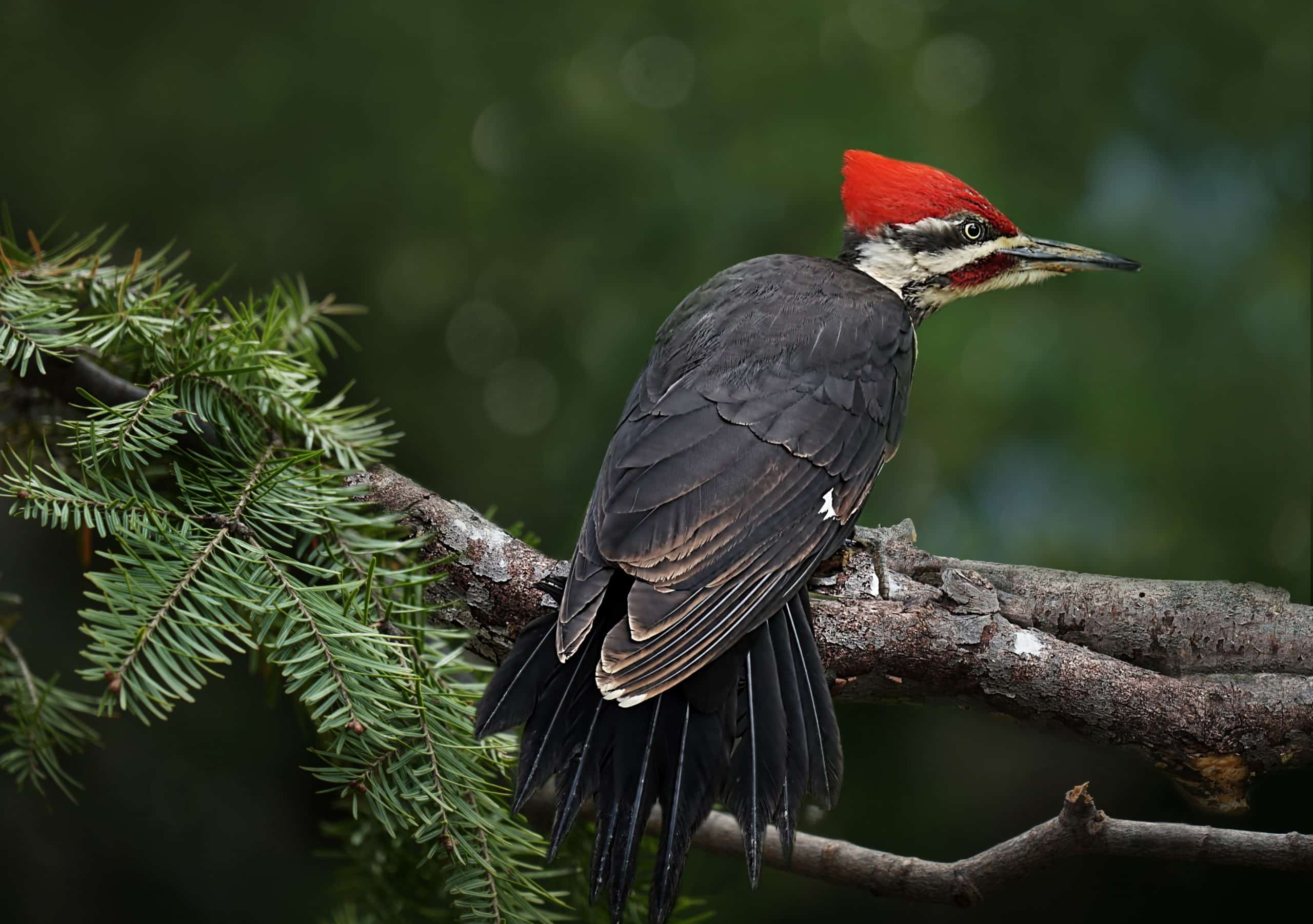Running Into Woodpeckers in Florida Species: Habitats and Actions
Running Into Woodpeckers in Florida Species: Habitats and Actions
Blog Article
Woodpeckers: A Comprehensive Overview to Understanding These One-of-a-kind Birds
Woodpeckers, with their distinct habits and physical features, have long captivated the curiosity of ornithologists and nature enthusiasts alike. From their rhythmic drumming echoing via the woods to their exceptional adaptations for scaling tree trunks with convenience, these birds offer a remarkable research in bird biology. Nevertheless, what really establishes woodpeckers apart is not simply their striking appearance but likewise their important function in maintaining the fragile balance of ecosystems. As we check out the detailed makeup, diverse species, and environmental significance of woodpeckers, a much deeper admiration for these distinct birds and the enigmas they hold unfolds.

Woodpeckers' Drumming Habits
Woodpeckers display a balanced and exact drumming actions that serves numerous crucial functions in their lives. This actions is largely associated with communication, territory defense, and foraging. The distinctive drumming sound is developed by the quick pecking of their beaks versus tough surface areas such as tree trunks, branches, or perhaps steel objects.
Interaction is a vital element of woodpecker habits, and drumming plays a substantial function in this process. Woodpeckers use drumming to develop their existence, draw in friends, and keep call with their partners and spawn. The regularity, intensity, and duration of drumming sequences share details messages to other woodpeckers in the area.
In addition to communication, woodpeckers utilize drumming actions for area protection. Woodpeckers in Florida. The loud and repeated drumming works as an advising to prospective trespassers, indicating that the area is already declared. By developing their region via drumming, woodpeckers lower the probability of problems over useful sources such as food and nesting sites
Furthermore, woodpeckers also employ drumming as a foraging strategy. The rhythmic pecking assists them situate insects hiding beneath the bark of trees by creating vibrations that interrupt the prey's camouflage. This habits showcases the adaptability and ingenuity of woodpeckers in using their drumming skills for numerous essential objectives.
Unique Adaptations for Tree Climbing
Having understood the art of drumming to connect, protect area, and forage, woodpeckers have evolved distinct adjustments that facilitate their amazing climbing abilities in their arboreal habitats. Woodpeckers have zygodactyl feet, with 2 toes directing onward and 2 toes aiming backward. These tail feathers provide security and equilibrium, enabling woodpeckers to navigate up tree trunks with accuracy and agility.
Moreover, woodpeckers have effective neck muscle mass and an one-of-a-kind skull structure that help in their climbing capacities. Their solid neck muscles enable them to rapidly eat tree bark without experiencing whiplash, while their thick head and little brain serve as shock absorbers, safeguarding wikipedia reference them from the effect of duplicated drumming. These adaptations jointly enable woodpeckers to navigate the vertical globe of trees with effectiveness and grace.

Function of Woodpeckers in Environments
Playing a pivotal duty in forest ecological communities, woodpeckers add dramatically to the equilibrium and health of their habitats via their one-of-a-kind behaviors and interactions with other species. One of the essential ecological functions of woodpeckers is their function in regulating insect populations. By foraging for insects under the bark of trees, woodpeckers help manage bug populations, protecting against episodes that could harm the general health and wellness of the woodland. Additionally, woodpeckers develop dental caries in trees that serve as essential nesting sites for a range of other bird species, advertising biodiversity within the ecosystem.
In addition, the drumming and articulations of woodpeckers play an important function in interaction and territory establishment. These audios not just serve to bring in companions but also assist specify borders between various woodpecker territories, minimizing conflicts and advertising an unified conjunction within the woodland community. Overall, the visibility of woodpeckers in woodland environments highlights their value as keystone varieties, influencing the dynamics and functioning of these environments in complex methods.
Makeup: Specialized Beaks and Feet
In the elaborate web of woodland communities, the specialized beaks and feet of woodpeckers are essential adaptations that enable them to satisfy their important ecological functions. Woodpeckers possess distinct physiological attributes that are especially developed to help them in their foraging and nesting actions.
The most distinguishing characteristic of woodpeckers is their solid, chisel-shaped beaks. click this These beaks are flawlessly adjusted for drilling right into wood to reveal bugs, larvae, and sap surprise underneath the bark of trees. The strong muscles and durable structure of their you could try these out beaks allow woodpeckers to eat a price of as much as 20 times per second without creating damage to their heads.
In addition, woodpeckers have specialized feet that aid in their acrobatic climbing capacities. Their feet have two toes aiming forward and 2 toes pointing backwards, offering a strong grasp on vertical surfaces (Woodpeckers in Florida). This unique foot setup, in addition to tight tail feathers that act as a supportive prop, permits woodpeckers to hold on to tree trunks and branches easily while they look for food or dig deep into nesting tooth cavities
Woodpecker Species Variety
Woodpeckers are a varied group of birds discovered across numerous communities worldwide, with over 200 well-known varieties displaying adaptations to various settings. Woodpeckers have evolved to live in a variety of environments, from woodlands and forests to meadows and deserts, each presenting distinct difficulties that have actually affected the development of distinct woodpecker varieties.
These adaptations enable woodpeckers to forage successfully in their respective habitats, lowering competition amongst varieties and advertising niche distinction. In addition, geographic seclusion and historic factors have played a duty in forming the circulation and variety of woodpecker varieties, leading to the vast variety of specialized adaptations seen in these remarkable birds.

Verdict
In verdict, woodpeckers are interesting birds that exhibit special drumming behavior, specialized adjustments for tree climbing, and play vital duties in ecological communities. With a varied variety of woodpecker species located worldwide, these birds are essential for keeping the wellness and equilibrium of forests and forests.
Report this page